
JANUARY


JANUARY





The year is 2025… And cooperatives are more relevant than ever. In fact, in June of 2024 the United Nations General Assembly declared 2025 the International Year of Cooperatives—IYC2025. International years are declared by the United Nations to draw attention to and encourage action on major issues. The UN first declared an International Year of Cooperatives in 2012.
Again in 2025, with a new theme—Cooperatives Build a Better World—the International Year of Cooperatives is intended to raise public awareness of the invaluable contributions of cooperative enterprises to poverty reduction, employment generation, and social integration. The Year will highlight the strengths of the cooperative business model as an alternative means of doing business and furthering socioeconomic development.
“Cooperatives are present in every aspect of our lives, and answering to each of the SDGs (Sustainable Development Goals), everywhere,” said Ariel Guarco, President of the International Cooperative Alliance. “This is the second time in history that the UN has dedicated an international year to cooperatives, and this is not a coincidence. Driven by concern for all communities, cooperatives have successfully adapted to overcome the evolving challenges of our time, and have shown repeatedly throughout history, that together we are indeed building a better world.”
Including concern for community, the 7 Cooperative Principles we’ve been operating by since 1973 sound much like the UN’s Sustainable Development Goals: People, Peace, Planet, Partnership, and Prosperity. These are excellent goals as we continue to shape a just, equal, and resilient future through food.
The resolution also makes recommendations to governments across the world to explore legislation and regulations to help promote the cooperative model. The impact that the cooperative model has on improving global food security is well acknowledged. So many agricultural and food cooperatives across the world are a critical piece of continued food access and justice.
Throughout the year, you will see us continuing to highlight this amazing recognition, and we will be sharing with you how co-ops everywhere impact our societies in such a meaningful way, starting with this Natural Enquirer! Inside you’ll find how Cooperatives Build a Better World, including how you and your Co-op are building a better world right here in Washington, with Skagit Valley as our epicenter. We’re announcing another monumental donation to Viva Farms through our Growing Good Fund; an exciting change to 4% Friday (along with the 2025 recipients); new community meals at the Co-op; and much, much more.
Join us as we celebrate what we’ve always known: the Skagit Valley Food Co-op makes this place we call home a better place.






The Board of Trustees of the Skagit Valley Food Co-op has always been fortunate to have a good group of qualified, involved member-owners who were willing to volunteer their time and varied expertise in serving on the Co-op Board. This has provided the governance necessary to allow the Co-op to broaden our offerings of high quality, healthy food, support our environment, support our community with relevant education, and support local farmers, international fair trade, and other co-ops. We have been able to manage our finances appropriately to provide a base for growth and a cushion for harder times while still providing support to members of our community in need.
Each year, two positions are open for candidates from the community. The dedicated staff board position is elected every third year. The election runs through the May Annual Meeting, and we hope for a good turnout.
We are especially interested in bringing in member-owners with skill sets that will enhance our role. As the Co-op is a business, business, finance, and leadership skills are always welcome. We work collegially and are looking for people who understand working within a group towards consensus while bringing their own experience and viewpoint to the table. The Board is hoping to increase its representation of the diversity of our community, and we encourage member-owners of all backgrounds and lived experiences to run for office, especially those from underrepresented groups.
If you are interested in being on the Board, we ask that you fill out the Notice of Intent (available on the Co-op website) and submit it to: board@skagitfoodcoop.com
We ask that interested member-owners also attend at least one board meeting and meet with current Board members to go over what the Board does and what you could expect if you joined.
The deadline for the next Board election is fast approaching. If you are interested in being on the ballot, you’ll need to submit this paperwork by February 7 and complete the meetings prior to February 14 in order to have your name and info included in the Notice of Election in the Natural Enquirer and online. (We’d also like a photo for the publication.)
If you are interested in being considered for Board vacancies that might arise between elections, the timing isn’t quite as urgent, although it would still be valuable to get the process started.
I want to start by wishing all of our members, shoppers, staff, and community partners a Happy New Year! We are an important part of our community, but only because all of you embrace us and participate in our mission.
2025—Wow! It always catches me by surprise just how fast time moves along. This month I am celebrating my fifth anniversary as the General Manager of our Co-op. I think, to many, I am still considered the new GM. I understand that notion, especially after forty years of leadership under Todd Wood, but after a solid five years, I don’t think I can be considered the new guy either. It has been a great five years, at that. I’m grateful I was provided the opportunity to lead this organization.
My time here started off with the pandemic, clearly the biggest challenge I’ve ever faced in my career. The pandemic reshaped our world, and we are still dealing with many of its repercussions. Challenges that were unique to the pandemic have now become the norm. Things like supply chain availability, increased labor cost, and increased food costs were all exaggerated during the pandemic and have become the new space we work within. That said, the sailing is somewhat smoother now, and I look forward to what the future holds for our Co-op. 2025 will bring some changes to our store, more in terms of programs and offerings than the shift s in physical store layout in recent years. Here are a few things you can expect to see in 2025:
We’re working to improve the Co-op Building’s exterior, which will likely entail cleaning our old bricks (not an easy task), refreshing the awnings, and reviewing our signage.
Hot sandwiches! Our Deli will be offering a new lineup of hot sandwiches, made with fresh ingredients by our team at the Makery.
The Deli will also be refining our product mix to give you even more of the foods you’ve been asking for.
· Produce will start offering organic, hand cut fruit to provide easy access to the amazing flavors of cantaloupe, honeydew, watermelon, varietal melons, pineapples, berries, and more.
· WIC — late in 2024 we became a WIC approved grocery store. The WIC (Women Infants Children) Program falls under the guidance of the USDA and the Washington State Department of Health. WIC provides food benefits, nutritional education support, counseling and programs for pregnant Washingtonians, new breast-feeding moms, parents, and caregivers of children under the age of five. I am proud that our Co-op is now participating in this important program to better serve a vulnerable population of our communities.
Scan to view application
Note to Spanish-speaking member-owners: Si usted desea ser candidato para la Junta Directiva de Skagit Valley Food Co-op, por favor visite: skagitfoodcoop.com/our-board
Hello to all of our loyal readers. It’s your editor! I wanted to take a moment to apologize for the delay in delivery of the October 2024 Natural Enquirer. The week of our print deadline happened to be the same week as my wedding. We hit our print deadline, but in my excitement to get out the door and take the plunge, I simply forgot to send the mailing list. Then, after the printing company received the list, there was a weeklong delay at the post office. So, for that, I apologize. It is encouraging how many of you were missing us in the meantime!
But now, back to our regularly scheduled programming. You can expect the Natural Enquirer the first week of every new quarter (January, April, July, and October) moving forward, barring any human or government agency error.
Happy New Year and Happy Reading!
Nicole Noteboom (Vander Meulen)
Winter Hours 7am–8pm Daily
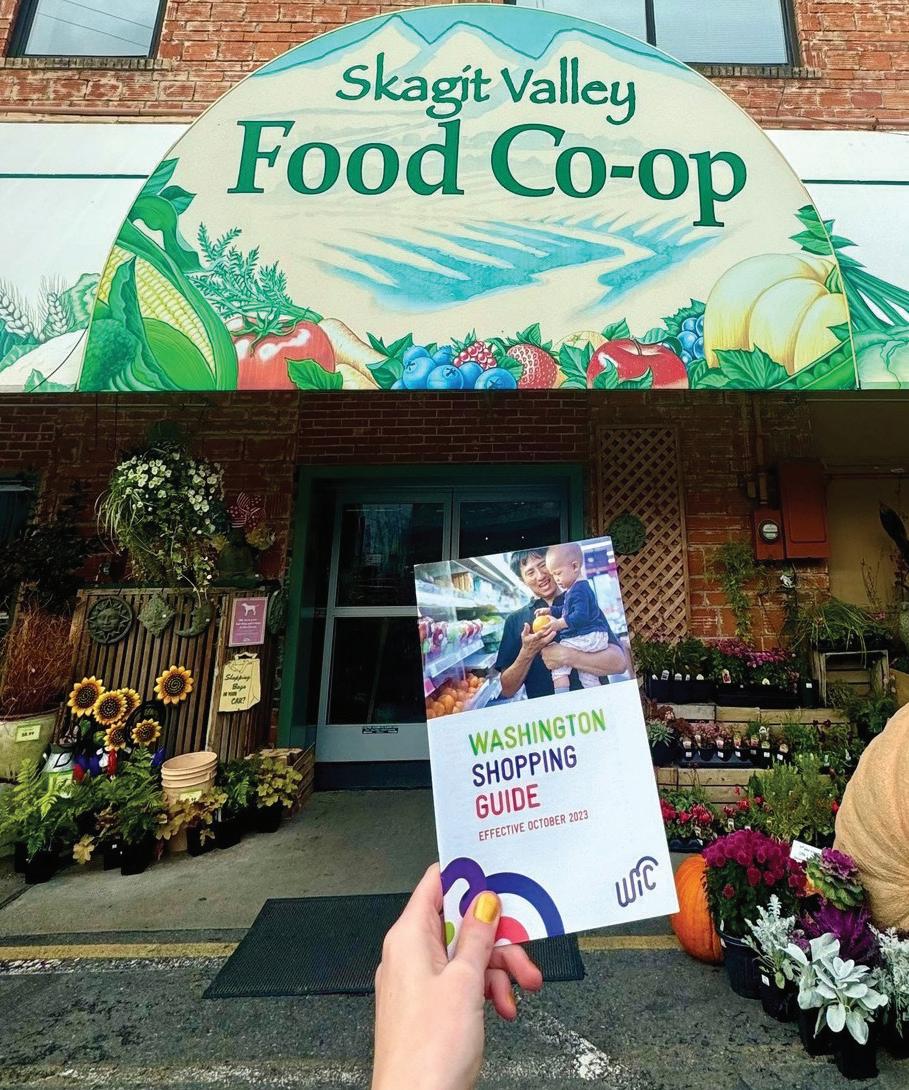

WIC participants are able to purchase foods through the program that are deemed beneficial by WIC guidelines. It should be noted that some of the products we are required to carry for WIC certification may not adhere with our product guidelines, and some WIC guidelines may restrict eligibility of some organic brands. So, you might see some products on our shelves that are conventional and unfamiliar to our store, but we believe making this exception improves food access for those in need. Another really cool part about being WIC certified is that we have the opportunity to educate and build awareness around organics and other healthy options to a new group of shoppers. I want to thank all of the staff involved with making this happen, you took the charge and you delivered!
More amazing news! The United Nation’s General Assembly has proclaimed 2025 as the International Year of Cooperatives. They last did this in 2012 (I was in my last year of my Masters in Cooperative Management at that time) and saw great success in raising awareness of the importance of cooperatives in our world. We look forward to sharing with you throughout the year how co-ops here, there, and everywhere create such a positive impact.
Thanks for being part of our Co-op and for all the support you send our way.
Cheers,
Tony White General Manager
EDITOR | Nicole Noteboom
CONTRIBUTING EDITOR | Leigha Staffenhagen
LAYOUT & DESIGN | Megan Young
STAFF CONTRIBUTORS | Tony White, nancylee bouscher, Ben Goe
BOARD OF TRUSTEES | Brad Claypool, Kristen Ekstran, Tom Theisen, Laura Bady, Casey Schoenberger, Rob Smith, & Genaro Gomez
Co-op Wins Best Of Skagit in Two Categories: Best Vegetarian/Vegan/Gluten-Free Foods & Best Eco-Friendly/Green Organization
The Co-op has won a lot of awards over the years, including Skagit’s Best Grocery Store (which we know to be true every year).
In 2024, we were again voted Skagit’s Best Vegetarian/Vegan/ Gluten-Free Food and Best Eco-Friendly/Green Organization in the Skagit Valley Herald’s annual Best Of competition.
Thank you for being a part of the very best of what Skagit has to offer, and make sure to try a Donut Muffin next time you’re in— made without gluten, but you’d never know it!


We introduced the Growing Good Fund in 2023— a fund established by the Board to further cement the Co-op’s legacy in the Valley, with a strong focus on the cooperative principle “Concern for Community.” The Co-op donated $100,000 to Viva Farms in both 2023 and 2024 through the Growing Good Fund. We’re excited to announce that the Co-op is donating another $100,000 to Viva Farms in 2025 to help fund the completion of its barn.
Viva is a non-profit Skagit Valley organic farm and beginning farmer support organization with a mission to preserve sustainable farming and create a resilient and just local food system. Viva continues to train the next generation of farmers to care for our land, grow our food, and nourish our communities, and we are happy to be a part of those efforts.
Building a better world is daunting. The world is big! We only have two hands, a few acres, limited time… how do we make sure we leave a world that’s safe, nourishing and—dare we say—delicious, for our neighbors, kids, and dear ones? It is easy to feel a sort of “analysis paralysis” as the issues we care about pile up into a long list. Every day, and usually more often, we have to decide which wagon to hitch our cart to, which headline to read, which issue to champion. Starting local can help. Perhaps we can’t build a better world right away, but can we build a better Skagit?
You’re on your way. Keeping your dollars local and participating as a member of the Co-op are important steps you’re taking. On 5% Friday especially so, but it’s true every day because cooperatives form when people work together toward a common goal that can’t be achieved alone. And with that comes community. Many in our community have already invested in bettering our local food system, and we all benefit from their commitment. Building a barn is one way Viva Farms is working to build a better Skagit— not because Skagit is not already great or not a place to be proud of, but because we work with amazing farmers, staff, and partners who can and want to offer something more. It is motivating to have a
strong foundation of the current incubating farmers and agricultural community upon which to build a real foundation, something concrete that will benefit the wider community for a long time to come: a building, The Barn at Viva Farms. By increasing delivery infrastructure, storage, and improved processing systems, we hope to provide something lasting to the next generation of farmers.
Viva Farms was proud to be in community with the Skagit Valley Food Co-op staff and members in 2023 and 2024, and we are beyond grateful to continue to do so in 2025. At the start of the year, we accepted another $100,000 donation through the Skagit Valley Food Co-op’s Growing Good Fund to make The Barn at Viva Farms an operating reality this year.
We know that if we can build The Barn at Viva Farms we will, in turn, be able to offer a new stability to beginning farmers. Over a year ago, we tore down a decrepit building, and now we have a sturdy structure that is just missing a few key elements. You may have noticed the progress of the building’s exterior being completed. With a few more donations and continued support, the progress will continue into spring—and with all fingers and toes crossed— farmers will be able to use it during the upcoming growing season.
We couldn’t build a better Skagit without the contributions of our farmers, and we can’t build The Barn at Viva Farms without you. You, the Skagit Valley Food Co-op community and members, are helping build a stronger, more resilient local food system for the future, and we are so grateful to be doing it alongside you.
To learn more about the progress of The Barn, and to make a contribution towards its completion, please visit us at www.vivafarms.org. We look forward to hearing from you. Here’s to a better world, and a better Skagit.


People come to farming from many backgrounds, but Francisco Farias just might be the only Skagit County farmer who was once a DJ.
The former host of “Bandiando al fin de semana” (“playing music on the weekend”) on KSVR, Skagit Valley College’s bilingual radio station, thrived as he engaged with listeners. “People would call in from the fields with requests,” he says. “I loved it, but I didn’t do it for money.”
By day, Farias had a job at Dykstra Farms in Burlington, working its dairy and organic vegetable operation with Andrew Dykstra and his late father Douwe. By night, he was polishing his English and working on his GED at the college. At KSVR, which broadcasts news and music in Spanish in the morning, he met Alex Perez of Northwest Agricultural Business Center. Perez suggested he sign up for Viva Farm’s practicum in farming.
Farias already knew most aspects of farming inside out. Between Dykstra Farms and his father’s farm in Mexico, where he raised beef cows and corn for tortillas, he had 30 years of experience under his belt. Planting, cultivating, and growing crops? Check Keeping animals healthy and productive? Check. Creating business plans, analyzing profitability, and keeping books? Not so much.
Through Viva’s farm incubator program, which offers bilingual training in farming practices and access to land, infrastructure, and equipment, he



could fill in the few gaps of his very long agricultural apprenticeship. He left the radio station and started the year-long evening course. His half-acre plot at Viva became four acres and then seven, at Viva and on rented land in Burlington. His brother Juan, who was also taking the practicum, joined him. A third brother pitched in as needed.
All that acreage meant Farias had to leave the Dykstras. “It’s hard to train a new person,” says Andrew Dykstra, “but it’s exciting when a good person can learn something, start a farm, and move up the food chain.”
Farias kept on learning as he farmed, taking courses in business, organic practices, “everything,” he said. Mastering organic berries was a priority.
This excellent crop grows beautifully in Skagit County and commands high prices—but Farias had never grown them before. Now, in June and July, he sells 200 flats of strawberries a week at farmer’s markets—and 8,000 flats a season wholesale.
“Strawberries go out the door!” he says.
(continued on page 11)
by Beverly Faxon
Lena’s guest house on the tiny island of Belize’s Tobacco Caye was made of two by fours and planks— no need for insulation, so no need for drywall or paneling. Everything inside and out—each board, each nail, each screw—was painted utility green, the color of park benches. We ate our meals in a dining area separated from the kitchen by a long counter, so we could easily talk while Lena cooked for us. She loved dinnerware, her one indulgence. Whenever she visited her children in the States, she returned with a new set of department store china. The shelves under her counter were lined with matching plates, bowls, and cups. Daily, the table was set with a different pattern—daisies, cardinals, small scenes of pagodas and bamboo. Lena was a tremendous cook. One morning she made the best scrambled eggs of my life; the secret, apparently, was lots of butter. I’ve never been able to recreate those eggs. Perhaps my arteries are grateful.
A lifetime of work and island living had left her body both a little worn and still energetic. One morning over breakfast, she told us that she was taking care not to become too heavy, so that, eventually, when her children needed to care for her, they would be able to carry her. She meant this practically, literally—her son or daughter might one morning need to pick her up from her bed and take her out to the hammock.
I’ve often thought of this conversation, not in terms of pounds, but of the heart and mind. How to become light enough so that, if need be, those caring for me someday might find it a lesser burden? Most recently, I’ve found it to be even more immediate: how to become light enough in the now so that my presence helps, rather than harms? It is, in part, the familiar question: how do I walk lightly on this earth? And it is, in part, another question: how to be in the world so that my presence is a lifting, not a weight?
It is the season of resolution. I have thoughts on how I hope (resolve?) to enter this year. (Though in full disclosure, these thoughts did not arise on a cold, crisp January morning, but in the dark afternoons of November, when hearts were unsettled, and the day’s light seeped out of the sky well before dinner time, and a constant rain looked like tears sliding down the window panes.)
I hope to not shutter myself off from the world and all its fearsome, beautiful, and unexpected ways. We become wary of what we don’t know, especially as we are encouraged in fear and suspicion by those who know we are less powerful when we are isolated. To be in community is to get to know those different from ourselves, to be side by side—whether it be a bright night of listening to music, or a wet afternoon rebuilding a park trail, or a brief moment contemplating apples in the Co-op’s bulk aisle. Or here is another way to look at it, suggested by the writer and activist Adrienne Maree Brown: We need to learn to be with people because we don’t know who we will be with in the Apocalypse. I want to remember that my community needs me. What I give may not be my most practiced skill

or what headlines tell me is most urgent, but if it is something that keeps me engaged and eager to help, then it is a good offering. Whenever possible, I hope to show up in person. The screen, though a useful tool, is a flat way to be together.
I hope to be quiet enough to listen to many voices— including those not often heard. And I want to listen to myself, including hearing that inner buzz that says a conversation has become corrosive, a cycle of venting that is no longer giving release, but is just perpetuating the anxiety. (I recently heard someone say, “We’ve outsourced almost every aspect of our governance. The only thing we’ve gotten good at is complaining.” Ouch, that hit a nerve.)
One of the perks of age is that I can now feel the moment when too much staring at headlines or too much exchange of doom stories over dinner makes my head buzz as though I’m a tuning fork. Years of pushing through—to meet a work deadline or take care of things that cannot wait—sets the habit of ignoring the body’s signals. That inner listening is a good self-care to recultivate.
Finally, I want to accept the limits, and the potential, of my reach. My impact may be less than I imagine globally, yet much more than I realize locally—in my state, in my county, in my community. And my greatest reach, the place where I can, daily, do the most good is with those in my closest circle.
Recently, our old barn cat, Cinderelli, died. She was a savvy outdoor cat, the survivor of a neighboring house fire, the mother of six kittens—tiger orange, silky black, gray with white, white with gray, classic calico, and a buffed rose smoke—each different from the last. Cinderelli was capable and independent, until she became deaf and then perhaps a little confused, cared for by her last surviving progeny—orange Bungee, who watched over her, patiently waiting for her when she couldn’t hear the dinner call.
After her death, I was aware of Bungee’s aloneness, of the fact that the one body he had to curl against was gone. I told my granddaughter about Cinderelli’s death—the first farm animal to leave when she was old enough to know it, the first death in her small life circle. She took it philosophically, with a mix of the pragmatic and the kind. Bungee, she said, would be the saddest, so it would be Bungee we must take care of.
And so, every morning, when I go out to feed Bungee on the porch, I sit on the hard, cool steps and wait to see if he comes to curl around my legs after breakfast. And he does, his back rising under the pressure of my hand, his face brushing up against my arm. I sit, with nothing to do except stroke the surprising softness of his thick creamsicle-colored fur, and I feel both our bodies relax, a gentling of our nervous systems in that moment of contact, with the rain drizzling down, the sky layered in gray. In a heavy but beautiful world, we sit side by side on the porch, becoming lighter together.


Here’s to another year of healthy, hearty, amazing food! Start your day with crunchy granola and more protein, follow your heart to our new bakery case, and get ready to drink your green in March! And if you’re a fan of football, Co-op wings are the real MVP—must-have for any game time spread. Here’s even more of the fantastic food you can look forward to in the coming months at the Co-op.


Love ‘em or hate ‘em, the season for New Year’s Resolutions is, well, now. And unsurprisingly, according to the Pew Research Center, 79% of resolutions are health-related, whether it be exercise or diet. While we might not be able to help with the exercise part—unless you consider pushing your cart really fast your cardio and putting winter squash on the grocery belt your weight lifting—we can definitely help with diet!
Whether you’re trying to up your daily protein, scale back your sugar and alcohol consumption, or incorporate more plant-based alternatives to your diet, our New & Notable picks for the New Year can help you hit your goals… or just enjoy something tasty!
Maybe you’re all-in on Dry January, or maybe you just want something light and fruity to sip on in the new year. Either way, we’ve got options.

Nixie Zero Sugar Sodas
No sugar? No problem! Nix it with Nixie’s bubbly zero-sugar, zero-calorie sodas! Enjoy a little extra effervescence without the sugar crash—open one for an afternoon pick-me-up or use them as a base for a Friday night mocktail. Choose from Classic Cola , Root Beer, and Ginger Ale
Wildwonder Sparkling Prebiotic + Probiotic Drinks
From Shark Tank success to Co-op shelves, Wildwonder sparking drinks have just 40 calories, 6g of sugar and are made with USDA organic fruits and herbs. Inspired by the tonics her Chinese grandmother used to make out of wild herbs and botanicals, founder Rosa reimagined the healing drinks from her heritage, where gut-healing superfoods meet big fruit flavors. Even better, 5% of profits support programs that empower women and marginalized communities. Dive into flavors driven by heritage with the tropical tastes of a California produce stand: Guava Rose, Strawberry Passionfruit , and Raspberry Lychee.

Forager

Made of oats, coconut, and cashews, Forager’s dairy free cinnamon vanilla creamer is vegan friendly and has just 1g of sugar per serving—it’s also free of any gums and oils, for a flavorful cup of joe you can feel good about.
Califia Plant-based Creamers New creamers from a brand you love in fantastic flavors: Califia Farms Almond Milk Creamer in brown sugar, lavender, and vanilla . Mix them if you dare! Or, if oat milk is more your thing, pick up Califia’s Organic Barista Oat Blend Creamer
MALK
Perhaps the cleanest creamer around, made with just four simple ingredients—filtered water, organic almonds, pure organic vanilla extract, and Himalayan pink salt—MALK Almond Milk Vanilla Creamer has all the nutt y vanilla flavor you crave to enjoy your drink without dairy.


Tiny but mighty, tinned fish is making a comeback! But these picks aren’t your mother’s Chicken of the Sea. Sourced from quality, wild-caught seafood, our canned fish options are full of protein, Omega-3s, and other nutrients, all in a convenient, easy-to-eat on-the-go package. You can also include them in Spanish-inspired tapas dishes for something fancy, or add them to salad or pasta for a boost of nutrition!
Bela Seafood Sardines in Lemon
Family and veteran-owned, Bela Seafood sustainably sources fish from centuriesold local fisheries in Portugal. Their sardines are wild caught and MSC-certified true sardines, the only European variety. Packed in organic extra virgin olive oil and flavored with natural smoke and lemon, they’re a flavorful addition to a simple garlic lemon pasta or atop a sliced Co-op baguette with fancy salted French butter. Either way, 20 grams of protein per serving is tough to beat!
Wild Planet Sardines
Scale-free, wild-caught, and packed with just water and salt, mild sardine fillets from Wild Planet have 18 grams of protein per serving and are Non-GMO Project verified. Light and adaptable to any meal, Wild Planet sardines are rich, meaty, and a pantry staple worth having on hand.
Tonnino Tuna Fillets in Olive Oil
Made from hand cut and packed pole line and wild caught yellowfin tuna, Tonnino’s subtle flavor is great for almost any dish, from a grilled Caesar salad to tuna tacos. Packed in olive oil only, these tuna fillets have 16g of protein per serving and won a superior taste award from the International Taste Institute in Brussels.
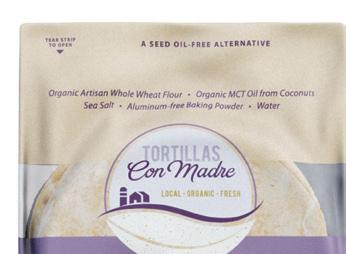


Tortillas con Madre MCT Oil Tortillas MCT (medium chain triglycerides) oil has gained popularity as a source of quick, clean energy to fuel your day. Soft and perfectly pliable for wrapping up a breakfast burrito or Caesar salad wrap, these tortillas are vegan, locally made in Lynden, and have just 5 ingredients: whole wheat flour, MCT oil, salt, baking powder and water. BTW, did you know we use Tortillas con Madre tortillas in all of our Deli burritos and wraps? That’s a lott a layers of local love!
It may be frigid, and their faces may be frozen, but adding a few friends to your frosty garden from Greenman Stone, might just melt your heart and spark excitement for the warm, dirt-filled days to come. Winter pollinators, if you will, standing guard while we await seed, sun, and stamen—reminding us of our own stamina during the dark months. Spring will come—flooding in, with chaos and color, and it’s back to our hands and knees, spade and gloves to toil amongst the guardians of the garden. Everything back to life. The statues, too, with a little imagination. Hello, friends!
How Greenman Stone arrived at the Co-op and into your garden is another tale of dreams coming to life.



Owner Cameron Nichols’ family opened an antique store in Pike Place Market in the early ‘80s, specializing in European imported antiques. Cameron, the son in N.B. Nichols & Son, noticed customers flocked to anything garden-related; in 1988, he started his own garden statuary importing business through his manufacturing ties in England. On his third buying trip to England, the light bulb went on: the gentleman Cameron had been working with offered to teach him how to actually make statues— there is sand and cement in Washington, after all. Cameron decided to transition from importing to manufacturing, so he and his brother apprenticed

with the same man who suggested the idea in the first place. They molded, casted, and then came home.
Nichols Brothers Stoneworks made its mark in Snohomish, growing into one of the largest ornamental stone companies in the country by the late ‘90s. After selling the company in 2008, Cameron started Greenman Stone in Chelan County with a slightly different business model than Stoneworks —one that rewards the artists who design the sculptures for Greenman Stone’s molds.




Nichols works closely with a handful of local artists and developed a royalty system that pays the artists to design and supply sculptures for Greenman Stone: artists retain ownership of the original sculptures, and Greenman Stone forms molds around each original work to sell the castings you see at the Co-op. This system not only allows for more rapid creation of new designs, it guarantees 10% of sales of each piece goes directly back to the artist. When Nichols started Greenman Stone in 2010 there were 15 pieces—nearly 15 years later, they’re about to introduce their 194th new design!
Designed by Northwest artists














So, even if you have collected a few Greenman Stone pieces, you can always find a new friendly face, fungi, or feature to round out your garden gang. And we think it’s true what they say: you can never have enough friends, especially in the heart of winter.
You can learn more about Greenman Stone and its artist process at greenmanstone.com!
10% of each sale goes directly to the artist
· Handmade in Leavenworth

Individually antiqued using eco-friendly permanent stain


· New designs every month

· No two are identical
Frost-proof








by nancylee bouscher
Until I was 14, I attended public school in the same place—Torrance, California—where the class photos have some of the same familiar faces every year. While I don’t remember if there’s a load of laundry in my washing machine waiting to be put in the dryer, I know the full names of people I have not seen since 1988 when my mom moved a very upset teenager from Southern California to the hub of excitement known as Edmonds, and THEN decided to upgrade to Everett a few months later.
Comparing Everett to Torrance could fill a book. Torrance was crowded and hot but filled with humans from all over the world. Everett was beautiful and wet and very racially homogenous. I took for granted the diversity of childhood. I was used to being the only blonde kid. I loved going to friend’s house and trying food I couldn’t pronounce. I loved hearing my friends talk in a different language to their grandparents as we raided the cupboards for afterschool snacks. We were friends because of our shared history and proximity—a kid is going to play with their neighbor, especially when the only screen around was the 18” grainy TV with four channels if you held the antennas just right.
When I was transplanted to Everett , I ran straight into cliques I didn’t even realize existed before. There were the jocks, the theater kids, the skaters— and they all seemed to have these clues—haircuts, clothes, slang—that told us who they were, and I was supposed to figure out where I belonged and adapt accordingly. There was a lot of flannel, concert t-shirts, and Dr. Martens involved in my wardrobe, and my Ford Festiva sported bumper stickers of my favorite grunge bands as we drove to all-aged shows at the OK Hotel in Seattle to blow out our ear drums and then smoke clove cigarettes INSIDE at the closest Denny’s.
While my ears have evolved to songs with less distortion, I still recognize the need we all seem to have to advertise our beliefs in subtle ways—in our clothes and hats, our jewelry and tattoos, our yard signs and bumper stickers. Sometimes it feels like we all have a marketing strategy as we advertise who are based on what we have, heavily influenced by our own budgets.
Companies spend millions to send out very crafted messages to win consumers’ dollars, and they all know what you want to hear. Just scanning the random assortment of wellness items on my desk, I find all sorts of fascinating language: extra strength, professional strength, nutrients with real food, brain vitality, real-fruit infused, highly absorbable, and replenishing minerals for active bodies
While none of these are outright lies, it’s all just marketing that doesn’t truly speak to the integrity of a product or the company that makes it. They are all just hoping you want to come sit at their table in the cafeteria, and that you’ll share your tater tots.
As a Co-op shopper, you vote with your dollars, and we do carry big national brands that you will see at other grocery stores because you want to be able to buy them here, too. We love that you decide to do that, and every department works hard to provide


those options. You also want local, organic, new-tomarket and high-quality items, and I have the honor of researching brands and products, and give them a home in Wellness. It’s one of the best parts of my job—giving a product the privilege of having your consideration—and I use my influence to support brands that I feel are aligned with cooperative principles.
One brand that I will be dedicating more shelf space to in the next year is Natural Factors. They are a Canadian company, based in British Columbia, that is still family owned. (This is very rare in the supplement world—most companies are owned by larger corporations). One Natural Factors production facility and shipping center is located in Monroe, Washington, and the other two are less than 200 miles away.
I have toured the local LEED Gold Certified building twice and continue to be impressed with how they have prioritized manufacturing processes that look at maximizing water and energy efficiency, material selection, air quality, and overall sustainability. It’s one thing for a company to claim to be concerned about the environment, but quite another to do the work to earn this Green Business Certification.
Another huge environmental impact to consider is that because Natural Factors facilities are so close, shipping distance is far less, which lessens carbon emissions. Most of their products are in postconsumer plastic, and while I know lots of us prefer glass, there are some other factors to consider. Not only is glass much heavier to ship, it requires a lot of additional packing material (cardboard and bubble wrap) to limit breakage. When breakage does occur, and it happens regularly, it wastes products, and gives us tiny ouchy splinters.
Most of Natural Factors’ products are shipped and displayed in just the bottle, as opposed to being a bottle inside of a fancy box that sits on our shelf and calls to you. This is a tricky trade in—boxes take ink and paper, but it also gives a company more space to
Ginger Deep Tissue Massage Oil
BADGER CO.
Beat the brrrr and the blues with these feel-good favorites! From spa-like experiences at home to uplifting scents and cozy candles, these picks will take your winter from tolerable to wonderful in the blink of an eye.




1 Shower Steamer
2
Designed for deep muscular relief this massage oil is infused with rejuvenating plant extracts, including arnica to soothe overworked muscles and cayenne for a gentle warming sensation. USDA Certified Organic and cruelty free.
NHCO BOTANICAL BODYCARE


Transform your morning shower into an uplifting spa experience. This invigorating blend combines the zesty aroma of fresh oranges with the warm, spicy notes of ginger for a rejuvenating and energizing start to your day. Your Co-op is the only stockist in Washington!





share information you want to know—and in larger font. Lastly, glass is permeable and does let some light in, whereas plastic is a bit more of a dark cave vibe. Light, moisture, and oxygen are factors you want to control to keep your supplements as potent as possible through their use by date.
Natural Factors uses ISURA to certify their products, which verifies the highest standards of quality for consumers. If you want supplements that are free of genetically engineered ingredients, contaminants, are scientifically authenticated to reflect the label claims, then you want to see the ISURA certification on the bottle. For all of these reasons—not to mention that the founder and current owner of Natural Factors actually cooked and served the lunch I ate at the facility years back—in the coming weeks, you’ll see more of their products in Wellness.
What you might also see more of in 2025 is an increase in folks’ personal branding budgets as we struggle to tell the world who we are and who we are not. I’m no different; however, since the popularity of Birkenstocks since the Barbie movie, I’m not sure what I’m saying with that fashion choice? I have asked myself more often lately if rather than TELLING the world who I am through my carefully chosen advertising (and shoes), I might venture to be bolder in SHOWING the world who I am. If we want the world to be more kind, then we need to be kinder, rather than just wearing a hoodie with that message. How we decide to treat each other in our daily lives can have an equal influence on our neighbors, our farmers, our teachers, our children as the decisions made in Olympia or D.C.
Then again, if you are reading this, you know the power of community because you are part of one of the best cliques around—the cool kid Co-op crew. We are a funky bunch, hard to pin a label on at times, but rest assured, we always have the best snacks.
3
Lemon-Ginger Immune Toddy WOODEN SPOON HERBS
A potent packet of immune protection for natural defense on the go! Try yours in a mug of hot water to help support your immune system with vitamin C, zinc, elderberry, and echinacea. Plus, it’s prett y and pink!
White Crystal Tea Light Holder ALOHA BAY
Brighten your space during dark days and long nights with candle holders handcrafted with Himalayan crystal salt. These holders are carefully hewn in a family-owned factory in Pakistan, which cares for its craft smen (mostly Afghan refugees), offering long term employment and humane working conditions. Free candle included!
Chakra Melts
5
ALOHA BAY
No petroleum, no paraffin! Made with sustainable palm wax and 100% pure essential oils, add these melts to a scent warmer to conjure positive energy, abundance, and happiness while relaxing in the comfort of your own home.
Meltdown Prevention Mug
LADYJAYNE
Feeling burnt out? Overwhelmed? At your max? Not today! Fill your mug with your favorite soothing tea or calming concoction (like mushroom coffee!)… because part of feeling warm and fuzzy is keeping your cool. 6
by Nicole Noteboom
In case you missed the bad news: in September 2024, Skagit County announced that glass will no longer be accepted for recycling at all Skagit County Transfer Stations for the indefinite future starting October 1. Due to a closure of a glass manufacturing facility in Seattle, there is no longer any facility in the area that will take recycled glass from Skagit County. Waste Management is no longer accepting glass in its curbside recycling either.
Residents have been advised to dispose of glass containers with household garbage. I simply can’t bring myself to do that. I imagine some of you feel the same.
So, what now? I vote for hoarding. I’ll remind you that in the April 2018 issue of the Natural Enquirer I shared that “my castle in the sky is an earthship home constructed from all the bottles of wine I’ve consumed in my lifetime.” —a bottle wall fantasy further fueled by my visit to a Guatemalan resort later in 2018, whose owners committed to building suites with used materials, including discarded wine and alcohol bottles. The drinks have been drunk, and the bottles in my garage have amassed.
There are, of course, more practical alternatives. If you’re looking for a little creative inspiration to keep your glass out of the landfill, here are a few ideas:




Drinkware + Etc. In true Co-op fashion, former General Manager Todd Wood only had one “cup” on his desk for an eternity—an emerald wine punt cut to pint-height. He used it for water, but you could imbibe anywhichway you please: iced tea, spicy margs, or, you know, more wine. Empty another bottle, and you’ll have a full set of cups in no time. Giftable, no less.
Containers + Candles. The power of a glass cutter doesn’t stop there. Add a cork top and you have a gorgeous canister for cookies, candy, coffee beans, bulk foods, or even seashells if you’re into that kind of thing. Vases are an obvious reuse, but I also love the effect of a whole hanging arrangement of floating florals. Such magic. The patterned neck of a Knudsen juice bottle would cast playful prisms if you put a candle inside. You can even visit Rewaxation in the Burlington Outlets to make your own refillable candles!
Home Décor + Holidays. This may well fall into the hoarding category, but there are several DIY projects floating around the internet on how to transform glass bottles into a Christmas tree if you’re already looking ahead to December. They also make stunning light fixtures—champagne chandelier, anyone? Or, with a few simple clamps, you can build an entire wall display, perhaps to propagate pothos.
Landscaping + Bird Feeding. It’s not a new idea, but I have neighbors who use jars to contain garden beds and line walkways. You can create a tiny terrarium or succulent garden. The resort in Guatemala also used old bottles as hummingbird feeders—a sweet upcycle indeed.
If you have other glass project ideas or would accept others’ glass for your own DIY dreams, please email us: community@skagitfoodcoop.com.

by
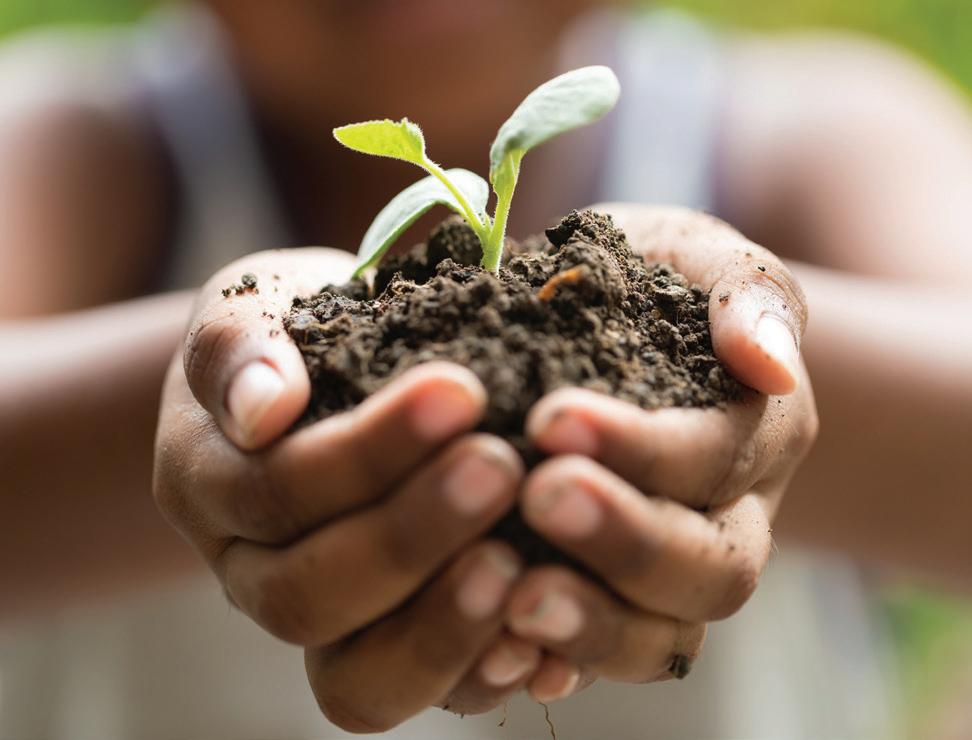
ReSeed has a certified, socially responsible business model in an industry where regulation is not guaranteed. The company pays and incentivizes smallholder (family) farmers in Brazil to maintain the climate-friendly, regenerative farming practices they’ve used for generations at a time when corporations are rapidly purchasing land in Brazil to raise cattle. Brazil exports about 25% (and growing) of the world’s beef. ReSeed compensates farmers so they can reject sale of their land and maintain their traditional way of life and continue to farm regeneratively. If you’re interested in how ReSeed calculates carbon credits, take a look at ReSeed.farm. NCG appreciates their commitment to transparency and accountability.
NCG partners with ReSeed, a credible, socially responsible carbon solution provider that helps companies like NCG offset their carbon footprints.
To offset NCG’s 2022 and 2023 emissions, NCG purchased 1,315 credits from farmers in the Quilombola (kee-lon-boo-luh) community in the Curiau (koo-ree-ow) region of Brazil. This area is home to about 1,800 people. According to ReSeed, “Members of this community have a close relationship with the Amazon, and their families are guardians of the environment. Their efforts to preserve the forest are critical, and ensuring the sustainability of their way of life prevents deforestation.”
NCG’s carbon emissions are calculated annually by looking at staff air travel and gas mileage, utility use for its office headquarters in St. Paul, Minnesota, and estimated annual energy usage for NCG employees that work from home, based on U.S. Environmental Protection Agency (EPA) estimates.


NCG has been offsetting carbon emissions from staff travel and office electricity use since 2012. From 2012 to 2022, NCG partnered with PUR and cooperative cacao farmers in Peru and Brazil to plant new trees and protect acres of old growth forest, totaling an estimated 1.8 million trees which will offset at least 7,052 metric tons CO2e within their lifetimes, while providing income and environmental benefits to the surrounding community, [which you may know as Co+op Forest].
In addition to supporting projects in tropical regions where fast-growing trees can most efficiently store carbon, NCG members [like Skagit Valley Food Co-op] have also expressed an interest in supporting carbon offset projects in the United States. ReSeed is building relationships in economically disadvantaged regions of the U.S., with hopes to bring their certified, socially responsible carbon offset model to domestic farmers. NCG looks forward to the potential for future partnership in this area.
JAN 24

Fridays just got even better because we’re upping our 4% Friday donation amount to 5% in 2025!
2024 marked the 20th year of 4% Friday—twenty whole years and hundreds of local organizations supported because of you! In fact, thanks to you and our ongoing 4% Friday Community Shopping Days, we have donated over $550,000 all-time!
Food security, food access, and concern for community continue to be a focus for your Co-op—feeding our community is paramount! So, as we head into 2025, the Skagit Valley Food Co-op Board approved a generous increase to this already flourishing giving program: from 4% to 5% of sales being donated to a local group each month.

The Skagit County Meals on Wheels program is dedicated to ensuring that no senior goes hungry or isolated in Skagit County. The delivery of hot, healthy meals and regular wellness checks helps seniors remain in their homes, promoting independence and dignity and preventing malnutrition. Funds from 5% Friday will directly support Skagit County Meals on Wheels in delivering hot, nutritious meals to seniors in our community. Beyond providing meals, each delivery includes a wellness check, offering peace of mind and helping seniors remain safely in their homes.
marchformeals.org






FEB 28 MAR 28







The Upper Skagit Library’s Freedge program rescues food from Concrete restaurants, corner stores, grocers, and schools, and offers them for free to anyone needing food assistance. Since opening, donated items rarely last more than two days in the Freedge, highlighting the pressing need in the Upper Skagit community. 5% Friday funds will be used to purchase a larger fridge for the program, and a shelf to better organize shelf-stable food. Any additional funds will be used to purchase supplies to help maintain the Freedge operation.
upperskagitlibrary.org


Since 2020, the Children’s Museum of Skagit County has housed and operated the Skagit Family Resource Center, providing supplies that are not being distributed elsewhere to families; including cleaning supplies, hygiene supplies, space heaters and blankets. Funds from 5% Friday will be used to purchase supplies to be distributed to families in need, including anything from household and personal care basic needs, to other infant/child-related items. helpmegrowskagit.com/resource-center





The mission of Concrete Farm to School is to build resilient students and families by providing access to healthy local foods, nutrition and culinary education, and hands-on gardening activities. The F2S program increases access to local produce as well as offering standards-aligned lessons in school gardens and kitchen classrooms for Pre-K through 12th grade. Concrete F2S hires a team of four to six high school students as Program Assistants every summer. Funds from 5% Friday will be used to cover the cost of student wages and program supplies.
unitedgeneral.org/farm-to-school

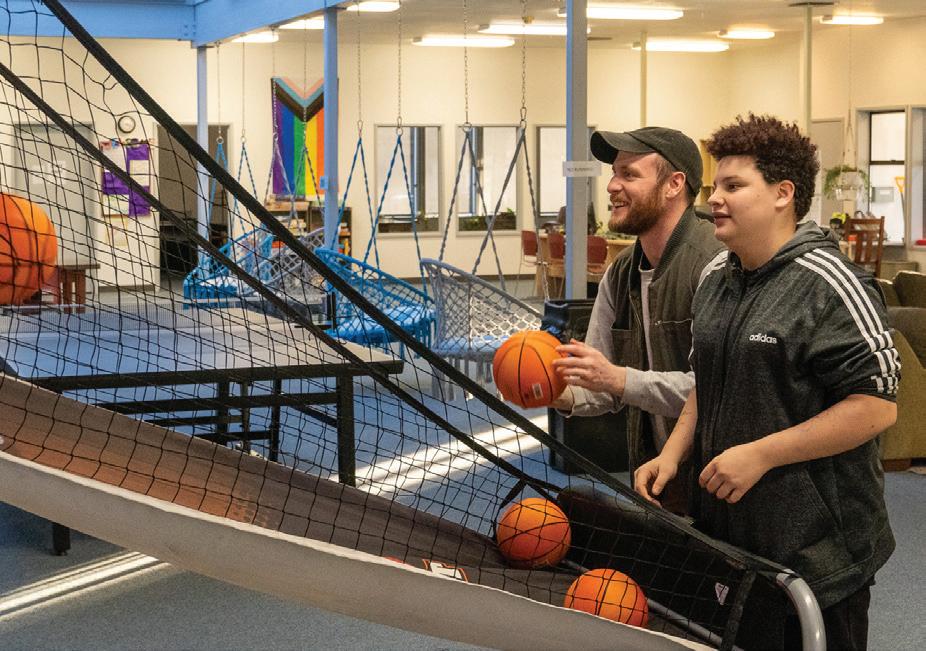
The Skagit Valley Family YMCA creates positive community change through relationships by empowering the mind, body, and spirit of ALL. Y programs, services, and initiatives help foster social responsibility. Beyond the gym and aquatics center, the Y also provides quality childcare education, afterschool programs and camps, and support for teens including housing, meals, drop-in activities and outreach programs. Funds from 5% Friday will be used to support the Sedro-Woolley Rec Center and Oasis Youth Shelter.
APR 25 MAY 23 JUN 27

skagitymca.org

Cascadia Clubhouse is building a vibrant community for Skagit area adults with developmental disabilities through shared experiences in arts, recreation, and enrichment programs. Funds from 5% Friday will support Cascadia Clubhouse in creating an inclusive and stimulating environment for everyone! Including the purchase of essential equipment for art, fitness, science experiments, games, and cutting-edge technology to accommodate individuals with sight and/or hearing impairments.
cascadiaclubhouse.org
$38,000+
2024 4% Friday Donation Total
$5 Community Meals on 5% Friday!
Then, to make 5% Friday even more impactful, we’re introducing $5 Community Meals on select 5% Friday dates, with hopes of hosting community meals every month in the future. The Co-op will serve $5 meals, and all of the proceeds from meals sold will also go back to 5% Friday groups!
March 28 is the first $5 Community Meal
We’re still hashing out details, but in the meantime, please mark your calendars for our first $5 community meal and other 5% Fridays throughout the year! More info coming very soon.
$551,000+ All Time Donation Total


Skagit Fisheries Enhancement Group builds partnerships that educate and engage our community in habitat restoration and a healthy community for all. Skagit Fisheries Enhancement Group will use funds from 5% Friday to expand their Salmon in the Classroom program. Last year, Skagit Fisheries got 900 local kids out of their classrooms and outside learning about salmon, watersheds, and what students can do to cherish and protect them.
JUL 25 AUG 29

skagitfisheries.org

The mission of the MV HOPE (Mount Vernon: Healthy Outcomes through Prevention Efforts) Coalition is to build an alliance that inspires hope, engages the community, and develops and implements strategies to prevent and reduce opioid and other substance use in Mount Vernon youth. As part of its mission to help raise awareness and prevention of opioids and other substances in Skagit youth, MV HOPE actively facilitates a Mount Vernon School District program called Peer 2 Peer (P2P). 5% Friday funds will be used to support the groups with meals, snacks, and nourishment as they meet.
mvhope.com
26 OCT 24 NOV 21


Children of the Valley provides a safe, positive, and enriching after-school program for under-resourced, low-income children throughout the Mount Vernon, Sedro-Woolley, and Burlington School Districts. COV now supports up to 200 students in grades K-6 who attend each of their district’s elementary schools. 5% Friday funds will be used to maintain and expand COV’s monthly cooking club, which features dishes that align with cultural-based themes, where lesson plans focus on exploring different cultures through craft s, games, stories, music, and food. childrenofthevalleymv.org
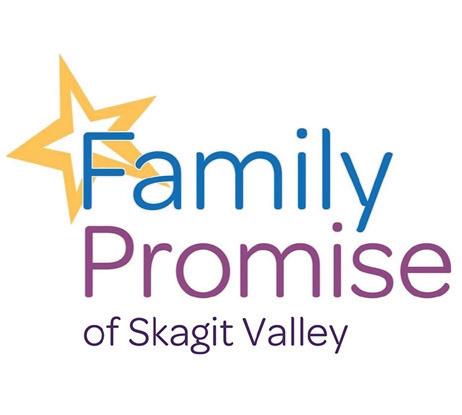

The mission of Family Promise is to come together as a community to support homeless families as they work to provide their children with loving homes. From November until March, Family Promise operates an emergency cold-weather shelter for families with children. Funds from 5% Friday will be used to provide families with meals during their stay at the Family Promise cold-weather shelter.
familypromiseskagit.org



Skagit Domestic Violence & Sexual Assault Services (SDVSAS) exists to provide free, confidential support for victims of domestic violence and sexual assault. The agency’s mission is to end domestic violence and sexual assault in the community through empowerment, advocacy, education and prevention. Funds will be used to assist victims of domestic violence and sexual assault and their children with essential needs like food, transportation, clothing, baby supplies, and toiletries. Victims who stay at the SDVSAS confidential emergency shelter often can’t afford these essential items.
skagitdvsas.org


The Mount Vernon Police Department’s Integrated Outreach Services (IOS) focuses on outreach and assistance to the homeless population. The program has expanded services, allowing the IOS to reach more people and provide more comprehensive, layered assistance. Funds from 5% Friday will be used for MVPD IOS to purchase incidentals—food, temporary housing, medical expenses, transportation to treatment, and prescriptions. These incidentals also include expenses involved in replacing critical paperwork: licenses, IDs, birth certificates, and more.
mountvernonwa.gov/1044/Integrated-Outreach-Services


Every time you bring in a reusable shopping bag, we honor your commitment to reducing waste with a token worth 8¢ that you can give back to one of four local organizations:

Skagit Animals in Need (SAIN) is dedicated to rehabilitating and rehoming large animals and livestock seized in neglect and cruelty cases, or released to animal control or law enforcement. Once in SAIN custody, the animal is placed in a safe foster home, a medical and behavioral assessment is performed, and rehabilitation begins. When the animal reaches a healthy weight and is up to date on medical care, it is made available for adoption to loving homes.


The mission of the Rick Epting Foundation for the Arts is to enhance the quality of life in Skagit County through the arts. The foundation provides annual scholarships to students who plan to major in an arts related program as well as grants to schools and other arts related programs like the Mount Vernon Riverwalk concert series.
The Co-op has been gradually growing its presence in community events in the years since the pandemic, and we intend to keep the ball rolling. In 2024, we hosted/attended 17 events! We even rounded out the year with twinkling lights and free fruit in the Downtown Mount Vernon Annual Christmas Parade and Holiday Tree Lighting! You can expect to see something even bigger and better in 2025.
Here are a couple of upcoming events your Co-op is participating in this winter. Hope to see you there!
Friday, January 31 | 5pm Skagit Riverwalk
The Illuminight Winter Walk celebrates art, light, health, community, and the Skagit ecosystem! Head Downtown for this free community event featuring live music, art, and a luminary lit procession.
Saturday, February 1 | 12-4pm Christianson’s Nursery Vinery Building
The Skagit Whatcom Seed Swap is back! Resident seed wizard, Steve Crider of Viva Farms will be there answering all your seed questions! The Fix-It-Fair is organized by Leah, founder of Pumped Bellingham, a store specializing in refillable and low-waste personal care and household products. The fair also features a small farmers market, food, beverage, and other local vendors!
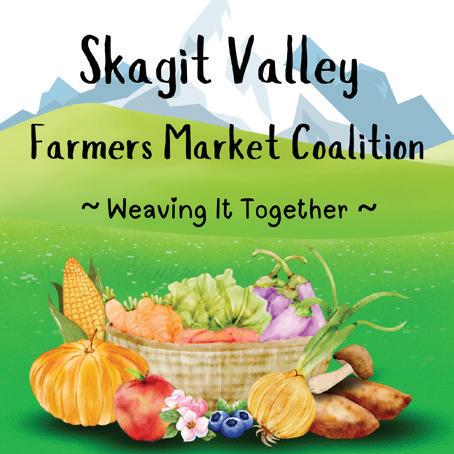


The Skagit Valley Farmers Market Coalition works to celebrate and grow our unique Skagit culture around food and community by strengthening our resilient farmers markets. Funds from Tokens for Tomorrow will be used to support the Coalition’s EBT match program. By offering unlimited match to EBT participants, Skagit Valley farmers markets can feed people in the most need while putting money in local farmers’ pockets.


Food Sovereignty is the right and responsibility of people to healthy and culturally appropriate food produced through ecologically sound and sustainable methods, and their right and responsibility to define their own food and agriculture systems. Finney Farm produces and distributes organic, heirloom, open-pollinated seed at no charge to help increase food access, build food sovereignty, and preserve biodiversity.
In the aftermath of Hurricane Helene, National Co+op Grocers (NCG), in partnership with its member stores, brand partners and the Cooperative Development Foundation (CDF), has raised more than $200,000 to support food cooperatives affected by the devastating storm.
Following the hurricane, NCG pledged to match up to $100,000 in donations from its member co-ops and brands, resulting in a final $201,914.13 raised.
Skagit Valley Food Co-op donated $1,500 for a total impact of $3,000 through NCG’s match.
CDF has and will continue to distribute the funds to help co-ops deal with impacts such as forced temporary closures, loss of inventory, property or equipment damages or losses, and support for staff who were personally impacted.
CDF has already approved $115,800 in grants to support Hendersonville Food Co-op (Hendersonville, N.C.) and French Broad Food Co-op (Asheville, N.C.). Any unallocated funds will be reserved for future disaster relief to support food co-ops.
“The generosity of the cooperative community and our brand partners has been swift and remarkable,” said C.E. Pugh, CEO of NCG. “We’re proud to stand alongside our fellow cooperatives during times of need, and it’s an honor to match the contributions that make recovery possible.”
The Cooperative Development Foundation’s Disaster Recovery Fund is dedicated to helping cooperatives and their members recover after disasters or other emergencies. Unlike many funds, 100% of donations go directly to supporting cooperatives, with no administrative fees charged for management of the Fund. Learn more about the Disaster Recovery Fund at www.cdf.coop.
National Co+op Grocers (NCG), founded in 1999, is a business services cooperative for retail food co-ops located throughout the United States. NCG helps unify food co-ops in order to optimize operational and marketing resources, strengthen purchasing power and ultimately offer more value to natural food co-op owners and shoppers everywhere.

165 member co-ops operate more than 240 storefronts in 39 states with combined annual sales of nearly $2.5 billion. NCG is a winner of the dotCoop Global Awards for Cooperative Excellence and a certified B Corp.
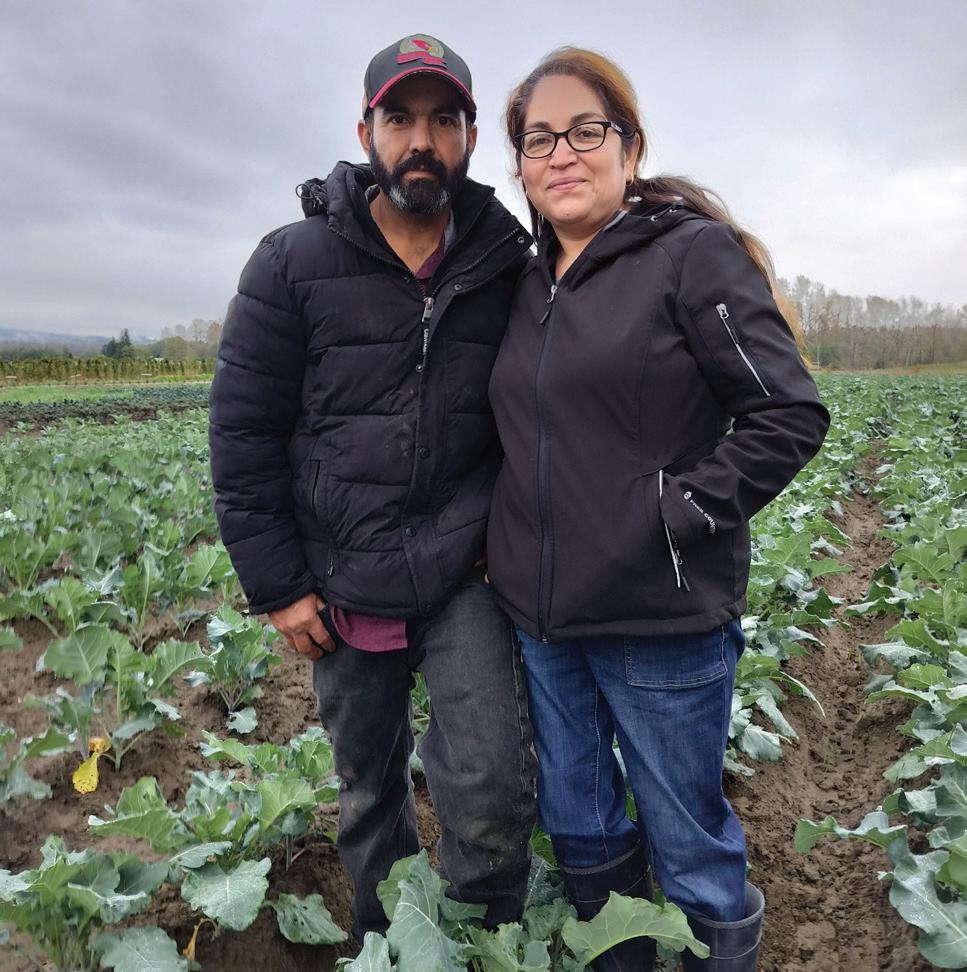

(continued from page 3)
Today Farias Farm cultivates almost 18 acres, on Viva property and in Burlington. He bought out his brothers and formed a new partnership with his wife Lorena, who keeps the books, handles email, and sometimes helps in the field. The two oldest of their four children lend a hand at farmer’s markets. Six full-time seasonal workers also power the farm.
The best part of this success story is that Farias is on a path to owning his own land and buildings—a big challenge for newer farmers in a county where small pieces of farmland are scarce and land with a house and outbuildings can be pricey. In 2021, the Farias’ Burlington landlords told the couple they wanted to sell their 12-acre farm and farmstead and hoped that Francisco and Lorena would buy it. Of course, the Fariases wanted to—but like most newer farmers, they had more energy, experience, and plans than cash in the bank.
Anna Chotzen, Viva’s Director of Farm Viability, stepped in. She helped the couple prepare financial statements and run projections to see what a purchase would take. Then she connected them to an impact investment company that buys and holds a property from the sellers while offering buyers a 10-year lease with a purchase option. They also “use a more inclusive and holistic evaluation process than a bank or Farm Credit,” says Chotzen.
“Right now, Francisco is not accumulating any equity, but he can purchase at any point during those 10 years for the original price. That gives him more time to arrange financing.”
Farias expects to be able to purchase the land in the next three years, using his own savings and a conventional loan. Until then, he can invest in infrastructure with confidence. “I want to change things a little bit, because we are making plans to live here a long time,” he says.
They have improved the soil with organic compost from the Dykstra farm and added high tunnels to protect tomatoes from rain and cold. Hoop houses are being cleaned up for lettuce and other tender greens. Three acres are being prepped for blueberries. A farm stand is on the drawing board. So is a berry washing station in or near the barn.And they are taking their first steps into the local farming community.
The Farias family has had the neighbors and the former owners over, because they are so proud and excited about their new home and farm.
“It’s hard to believe we live here now,” says Lorena. “It feels a little unreal.”
“I have a barn!” says Francisco. “That’s why I’m so happy!”
This article was originally published as part of Skagitonians to Preserve Farmland’s “Meet a Farmer” series. Visit skagitonians.org to sign up for more farmer stories.

Children of the Valley has been a recipient of 4% Friday in previous years and is a 5% Friday group again in 2025. Here, some of the work your shopping trips have helped shape brighter futures for the children they serve: in 2024, COV expanded programming, achieved priorities in its strategic plan, and continued to empower young minds, creating a lasting positive impact on families in our community. When children “graduate” Children of the Valley, they take photos of the students in cap and gown to help them DREAM BIG about their next graduation!
COV Alumni Spotlight
Diana Carrillo-Betancourt attended COV from 1st through 6th grade.
What was your life like when you joined COV?
My parents immigrated in 1989 to the Skagit Valley. I didn’t have the resources at home to be able to get school work done, coming from parents that worked long hours and English wasn’t their first language. Getting referred to COV by my school was one of the best things that could have happened to me.
What were the immediate impacts of COV on your life?
The immediate impact COV had was structure. Growing up I struggled with dyslexia, reading was a big struggle and they knew that and took that extra time to help me. COV gave me that safe place, making me feel like I did have a chance in this society from the start.
What were the lasting impacts of COV on your life?
I could never wrap my head around the fact that people I have never met would help me without even knowing me. They did it with the care from their heart. That will always stay with me and I will always be grateful.

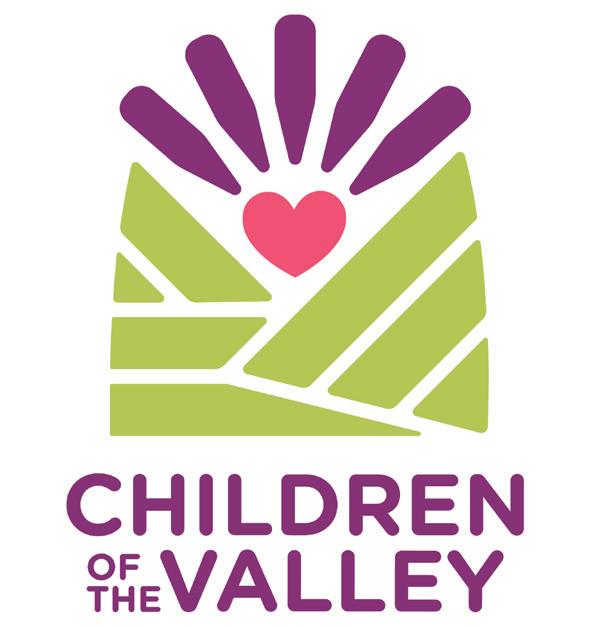









Acupuncture Barbara Paul-Mayer, MAc. LAC 360-336-6809
Core Synchronism Julie Kongs 360-630-6742
Colon Therapy
Jayne De Felice, I-ACT Certified 360-336-5220
Reiki & Theta Healing®
Valerie Jean Rose, Reiki Master 360-840-1723
Massage Therapy Spencer Kelliher, LMT 425-231-7605
Rolfing Structural Integration® Nils Larsen 360-293-5866
Clinical Massage & Lymph Drainage GuruBani Whitney, LMT, CLT, CPHt, RH www.alchemy-wellness.co









































Carol Veach
Finance Director
Co-op Employee since January 2015
A couple of years ago after the Third Street Café closed, I received a call from a customer who had purchased a rather large gift card for a family member. I was able to get necessary information from her and told her that I’d call back as soon as I completed a little research. I was able to call her back the next day and resolve the issue.
A couple months later I was at a gathering and the customer I had helped was there. She just happened to be someone I had gone to school with. When she learned that I work at the Co-op she told me how she had gotten the best customer service from an employee involving a gift card and then she determined it was me. It made me really happy to hear how I had helped this person and how meaningful it was to her.
Since I eat lunch from the Deli almost every day, I have many favorites. In the winter, I’m especially fond of the Mulligatawny and Avgolemono soups and also the beef enchiladas. The custom-made sandwiches are always great no matter what time of year. Any one of these items with a fresh piece of fruit is delicious.
I’m not the primary cook in our household, but I do love to walk through the store and pick out the freshest local ingredients for my husband to cook. Other times, I pick up something to go from the deli.
It depends on the time of year. In the winter I like to work on projects in our house and go skiing with my family. In the spring and summer, I spend as much time as I can after work in my yard (my happy place) while listening to music. I also love to travel. It’s exciting to experience different cultures. Recently on a trip to Portugal, my husband and I were really impressed with ecotourism and their sustainability practices, especially, in the harvesting of seafood.



NicoleN@skagitfoodcoop.com
360.336.5087 x136
We offer discounts for prepayment. All first-time ads must be prepaid. The ad deadline for the next issue (April 2025) is Friday, February 21.
by Ben Goe

Many years ago, shortly after I took over as Produce Manager, I set up an annual meeting with all of our local farmers to go over plans for the coming year. It was a prett y small group back then, but has since grown much larger. A meeting seemed like a natural fit—get everyone in one room and talk about who’s growing what. The Co-op’s General Manager comes and addresses the group, answers questions and gives an update on the business. We feed everyone lunch. We go over crop plans and talk about what went well in the past season, what we were short on, and ideas for new crops to add in. Like I said, it seemed like a no brainer—nothing special. As the years went on though, and I met more people in the industry and learned more about how other stores operate, I was surprised to learn that it was something special. Unique, even.
Most stores that deal directly with farmers set up contracts at the beginning of the season. They agree to buy certain quantities of certain things at a certain price from certain growers. They sometimes play growers against each other in order to drive down prices. Consequently, the farmers often feel that they are in competition with each other. It never crossed my mind to run things that way. It’s contradictory to the spirit of cooperation that food co-ops are supposed to embody.
Andrew Yokom, whose current role is Executive Director of the Puget Sound Food Hub, moved up here years ago from New Mexico to run the Food Hub. He came in and introduced himself and told me something that surprised me: he’d heard about our annual farmer meeting in New Mexico—in fact, it was fairly well-known nationally among food co-ops! I was shocked! Since then it’s come up a number of times when meeting people from other co-op produce departments. I don’t know that many stores have adopted the model, but it certainly gets talked about. I’ve even had people from a handful of other organizations sit in on the meeting to observe.
CASCADIA MUSHROOMS:
Shiitake, Oyster, Lion’s Mane mushrooms dried Reishi, Oyster + Shiitake mushrooms growing kits + mixed mushroom packs
CEDARDALE ORCHARDS: apple cider; gallons + pints (not certified organic)
SAUK FARM: Honeycrisp apple cider
DAHLIA DEPOT: pea shoots + pea shoot microgreens red kohlrabi + radish microgreens mild + spicy mix microgreens (not certified organic)
FIRST CUT FARM: assorted potatoes + onions
THE CROWS FARM: assorted radicchio + Winter squash
BOLDLY GROWN FARM: Daikon radish, kohlrabi, shallots Savoy, purple + green cabbage assorted beets, radicchio, + Winter squash
There are a number of benefits to running things this way, and few negatives. Our Skagit farmers share a sense of community that’s lacking in many agricultural areas. They help each other out. There are certain crops grown by single farms specifically for the Co-op, but there are many high-volume crops that are shared among multiple farms. Onions are a great example. We sell an astonishing quantity, and they keep well, so we just split the orders throughout the season. Eventually, we sell all the onions from every farm.
When a farmer has too much of something, they will drop the price, and the Co-op will put it on sale. Sometimes it's a crop that another farm is supposed to be our main supplier of, but we all help each other out. The main supplier will step back for a few days or a week, so we can move the surplus, no hurt feelings. We can also pay the farmers a premium when the market is running high on something. If broccoli from California is in short supply and expensive, we’ll pay that price to the local farm even if it happens to be higher than what we’d discussed for the season. Our farms also share packing lines, storage space, advice, and more. The larger farms will give smaller farms precedence, even on crops that they are our main supplier on, because the larger farms have other outlets for their produce that small growers simply don’t have access to.
The farmer meeting is always a blast. It’s a much bigger group than it used to be, but it still feels intimate. Everyone is on a first name basis. We hang out and drink coffee and eat sandwiches and baked goods from the Deli.
At the end of the meeting, when we’ve run down the whole list of crops, and I have to get back to the day-to-day of the Produce Department, the farmers always stay for another half hour or more, chatting about their families and talking shop, because they aren’t rivals. They’re a community.




HEDLIN FAMILY FARM: green, Savoy + January King Savoy cabbage
RALPH’S GREENHOUSE: leeks, parsnips, cabbage, carrots + daffodils
BROWNFIELD ORCHARDS: Gala, Fuji, Pink Lady, Braeburn, Granny Smith, Honeycrisp, Evercrisp + Cosmic Crisp apples
WELL FED FARM: beets + purple cabbage assorted Winter squash
MOONDANCE FARM: sunflower sprouts, celery root, French grey shallots Winter squash
SOUTHERN EXPOSURE: sunchokes
GRIFFIN FAMILY FARM: Medjool dates not local, but fresh and direct from Somerton, AZ. 3rd generation family farm, certified organic

Hello twenty-twentyFIVE , and hello to FIVE new high FIVE recipes. Sensing a theme? Good things come in FIVES: five ingredients, 5% Friday, and $5 community meals (coming soon!)
As always, these High Five recipes call for just 5 ingredients or less, and less than 30 minutes of your time. High five to 2025!
Citrus, Mixed Greens & Beet Salad | Serves 2
If the holidays and heavy sides like mashed potatoes and gravy and stuffing have left you feeling, well, stuffed, mix it up with something bright and light to start the new year!
Don’t like beets? Substitute with cucumber or avocado.
· 10oz bulk mixed greens
· 2 gold or red beets, rinsed and peeled
· 2 medium oranges or 4 small satsumas, or mandarins
1⁄2 cup crumbled feta or goat cheese
Co-op Citrus Vinaigrette
Wonton Soup | Serves 2
When you’re wanting warming soup that isn’t overly heavy or creamy, this wonton soup is the way to go. Plus, it’ll be ready in less than 20 minutes! Works wonderfully for weeknights–and do toss in some Co-op shredded chicken for extra protein, if you are wont to do.















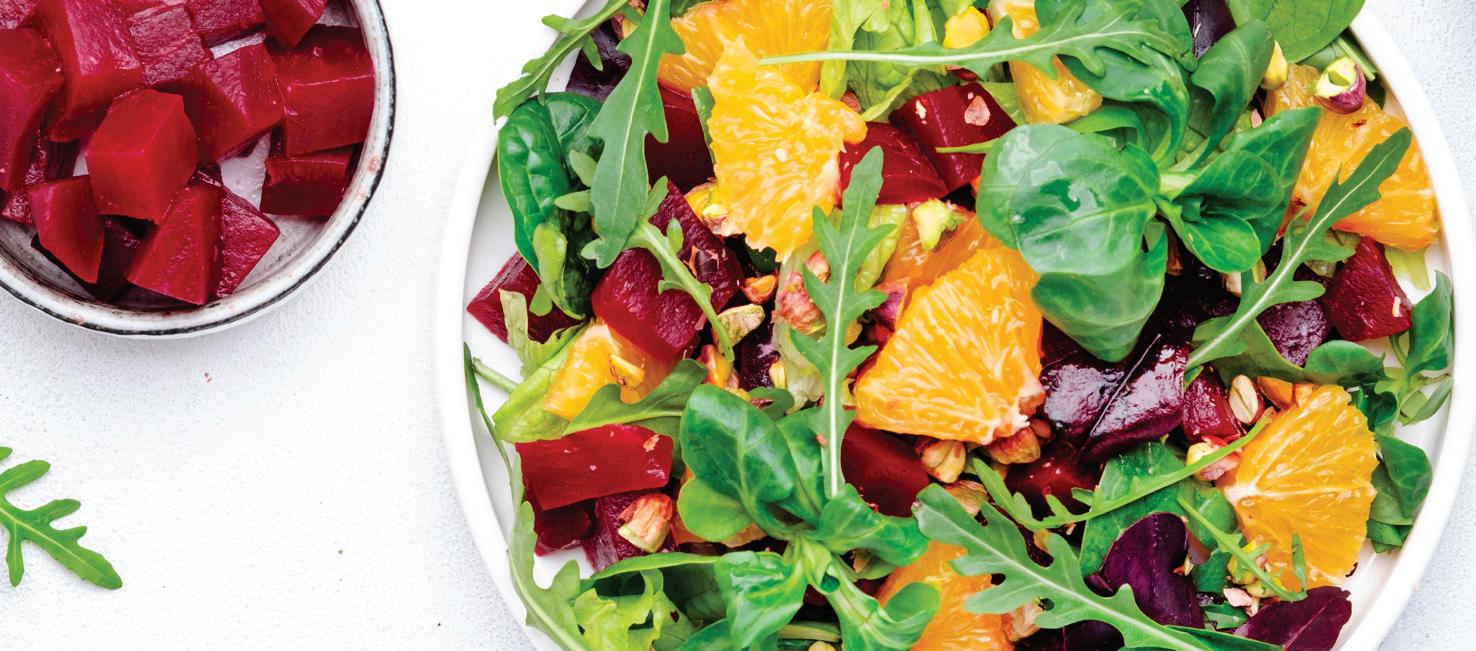
Directions:
1. Drizzle the beets in oil, sprinkle with salt and pepper and wrap in foil. Roast for 35-50 minutes, or until fork-tender. Set aside to cool.
2. Peel the oranges and separate into slices.
3. Toss salad greens with Co-op citrus vinaigrette (to taste).
4. Top with sliced beets, citrus, and a sprinkle of cheese.
These pulled pork sliders are easy and a total crowd pleaser on game day, or any day. If you don’t eat pork, swap it with our smoked chicken!
· 2lb package Co-op Smoked Pulled Pork
· Your favorite brand of BBQ sauce–we love Stubb’s
· 10–12 frozen wontons (or Loaban dumplings)
· 1 bok choy, chopped –leafy greens and stalk separated
· 1 shallot, thinly sliced 1-inch fresh ginger, minced
3 green onions, thinly sliced

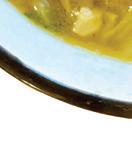



Pantry ingredients: olive oil, 32 oz container of chicken or veggie broth, soy sauce (or coconut aminos), sesame oil, rice vinegar, minced garlic.
Directions:
1. Add 1 Tbsp olive oil to a pot and saute the shallot, ginger, and 2 Tbsp minced garlic.
2. Once fragrant, add chicken stock, 2 Tbsp soy sauce, ½ Tbsp sesame oil, 1 tsp rice vinegar, and bring to a boil.
3. Once boiling, add frozen wontons. Once wontons float to the top, toss in bok choy stalks and simmer for 2 minutes.
4. Distribute chopped bok choy leaves between two bowls. Pour soup over the bok choy, top with green onions and chili crisp, if desired. Enjoy!
‘Tis the season to be sweet on citrus!
· 2 bags of Co-op Pretzel Buns or other rolls Batch of coleslaw (if desired)
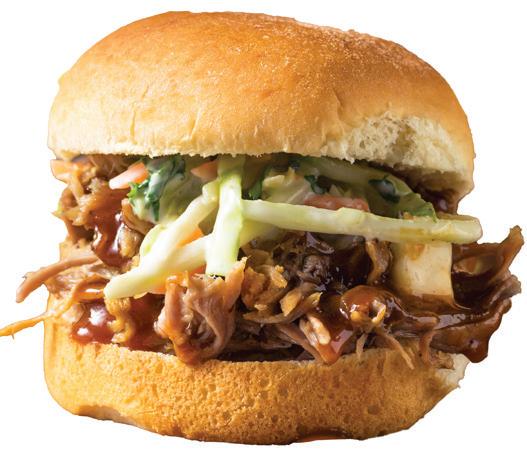
Pantry ingredients: Worcestershire sauce, garlic powder, poppyseeds, melted butter
Directions:
1. Preheat oven to 350°F. Slice the rolls in half and set aside the top half.
2. Place the bottom halves of the buns in a 9x13 baking dish. Top with pulled pork and a drizzle of BBQ sauce, then add the bun tops.
3. Combine 1⁄4 cup of melted butter, 1 tbsp Worcheschire,�1⁄2 tbsp garlic powder, and 1 tsp of poppyseeds. Pour the butter mixture over the top of the buns and use a spoon to spread evenly.
4. Cover the dish with foil and cook for 10 minutes. Remove foil and bake for another 5 minutes.
5. Once the buns have cooled for a few minutes, add a scoop of slaw under each bun. Grab your pals, turn on the Seahawks game, and pig out!
Recipe adapted from Kim’s Cravings



· 1�1⁄2 cups water
· 1-inch fresh ginger, thinly sliced
· 1⁄4 tsp ground turmeric
· 1⁄2 cup honey
1⁄2 cup Co-op lemon juice
Directions:
Birria: Co-op Style | Serves 4–5



Sensational citrus are rolling in, and we’re ready to sip some sunshine with this uplifting honey ginger lemonade tonic. Enjoy over ice or piping hot to soothe a sore throat. Either way, you’ll be feeling zesty!



Birria really doesn’t get easier than this. While our take isn’t quite the classic, it is deeply flavorful, smokey, and just the right kick of spice!


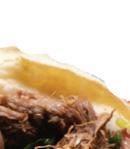



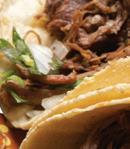












1. Bring water to a boil in a saucepan, remove from heat, and stir in ginger, turmeric and honey. Let stand and steep for 20 minutes.
2. Strain the liquid into a quart jar and stir in lemon juice.
3. To serve chilled, fill a 12-ounce glass with ice and pour ½ cup of lemonade concentrate over the ice. For a crowd, fill a two-quart pitcher with ice and pour in all of the concentrate.
Recipe adapted from grocery.coop
2-3 lb package Co-op Beef or Lamb Birria
8 tortillas, corn or flour
Cotjia cheese
1⁄2 onion, chopped
Cilantro, chopped









Pantry ingredients: your favorite taco fixin’s– avocado, pico de gallo, radish, etc
Directions:

1. In an oven-safe roasting pan, add 4-5 cups chicken stock with 2-3 lbs of birria meat.
2. Cover and braise for 4-5 hours at 300°F. You’ll know the meat is done when it shreds easily.
3. Shred, serve on a tortilla with your favorite toppings, or, you can serve birria over rice and beans as a stew!
Peel into winter sunshine at our free winter citrus tasting, and save on citrus all weekend long! JAN 31–FEB 2

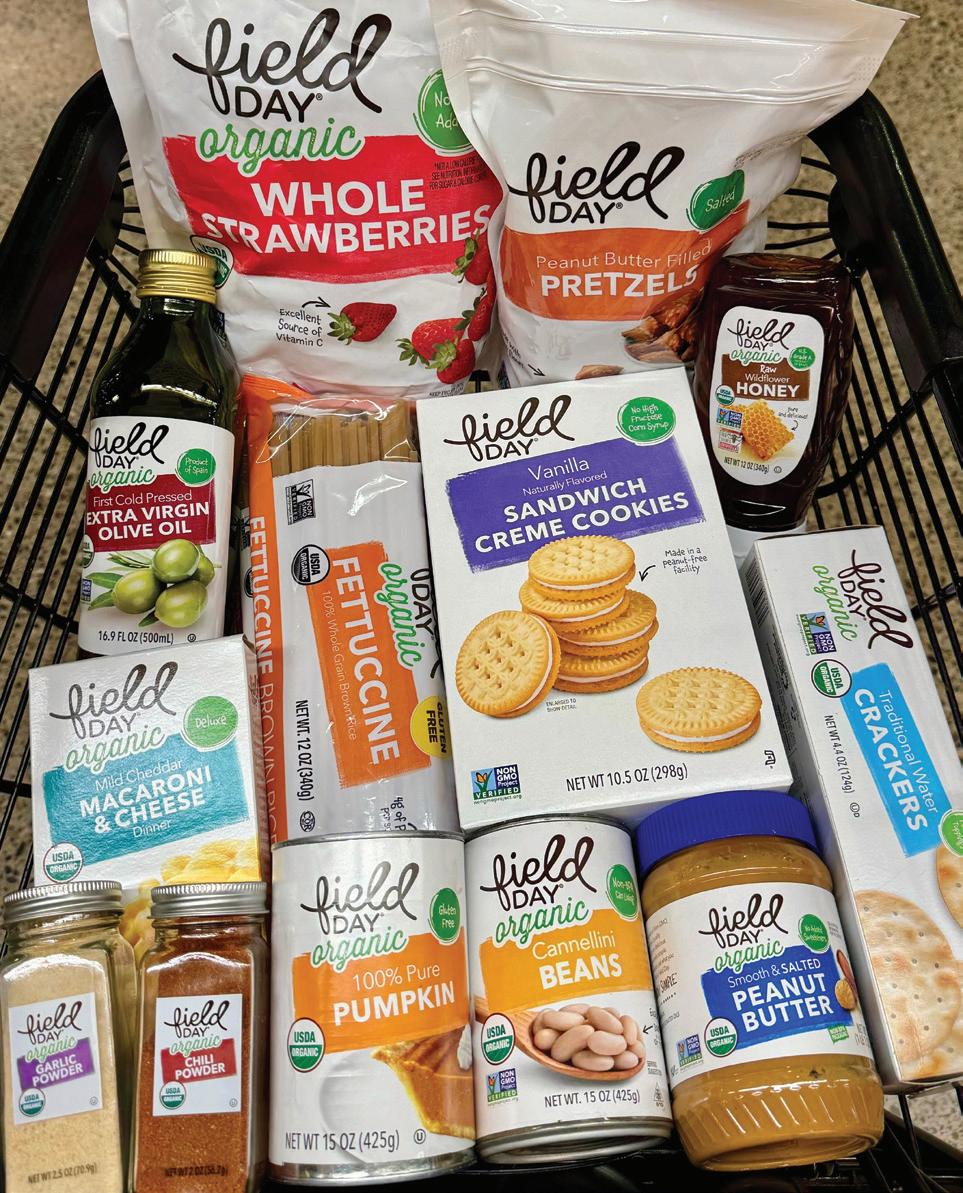


















$100,000. That was the goal. Thanks to you, and together with 165 other fellow food co-ops, we were able to donate an outstanding $140,000 to North American Traditional Indigenous Food Systems (NĀTIFS), a nonprofit dedicated to revitalizing Indigenous food systems and promoting cultural preservation within Native American communities.
The NĀTIFS donation was made possible by National Cooperative Grocers through a nationwide cause promotion to increase food access at the local level, while simultaneously funding efforts to promote and restore Indigenous food sovereignty on a larger scale. Last November, food co-ops around the country participated in the promotion by lowering prices on all Field Day products while also donating five cents for every Field Day product purchased: lower prices for you, higher donation for NĀTIFS.
Collectively, co-op shoppers put approximately 280,000 Field Day items in their carts!
At our Co-op: 18,616 Field Day items for a Skagit Valley Food Co-op contribution of over $930.
In case you didn’t already know, Field Day is the Co-op’s value brand that affords better access to organic, nutrient-dense foods (including canned organic produce) along with household products at a competitive price, for everyone. At a time when grocery trips increase for seasonal celebrations, being able to purchase these items is an opportunity for people to eat better on a budget throughout the holidays and every day.
NĀTIFS was founded by Lakota Chef Sean Sherman (James Beard Winner known as The Sioux Chef). Through initiatives like the Indigenous Food Lab, NĀTIFS offers training programs, educational workshops and support for Indigenous entrepreneurs to empower individuals and foster economic development.
By addressing economic disparities, food insecurity and the loss of Indigenous food knowledge, NĀTIFS aims to restore health, wealth and cultural identity to Indigenous populations. The organization's commitment to promoting Indigenous foodways education, facilitating food access and revitalizing ancestral knowledge underscores its mission to create positive social impact and support underserved communities.









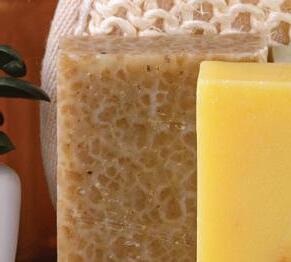






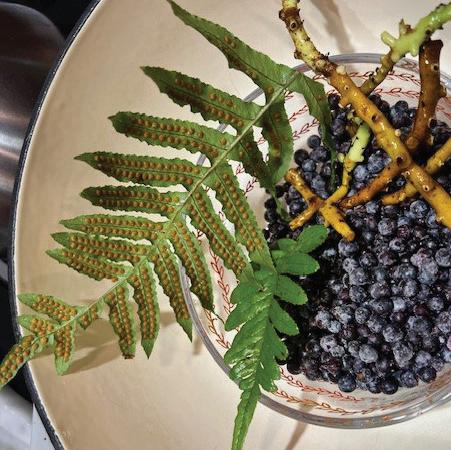


Your Co-op wanted to do more. Because much of NĀTIFS’ work is currently Midwest-focused we sought to amplify the nationwide promotion by creating local impact with our own donation: Skagit Valley Food Co-op pledged to match our contribution toward the NĀTIFS campaign with a donation to 13 Moons at Work. Not only did we match our NĀTIFS donation of $930, we tacked on 5% of sales Native Northwest in the month of October to the total, in recognition of Indigenous People’s Day//Month. That’s $6,020!
Native Northwest was featured in the October 2024 Natural Enquirer; it is a local organization dedicated to supporting Indigenous art and artists, whose Indigenous-designed products we carry in our Mercantile.
13 Moons at Work is a Community Environmental Health Program of the Swinomish Tribe, whose land is here in Skagit County, not far from the Co-op and adjacent to much of Skagit’s rich agricultural lands. Part of their work involves evaluating Indigenous health, a difficult task due to the many intangible aspects of health. The strategy is to focus a paradigm of health in lieu of disease, and to think about less tangible aspects of health via the proxy of first foods (also called traditional foods or “Swinomish foods”). The Swinomish apply the Indigenous Health Indicators concepts to its climate change work, as well as to food sovereignty and informal learning.
The program has also developed and launched the 13 Moons curriculum, based on the 13 lunar phases of a calendar year. The lunar cycles indicate seasonal changes, so each moon is named for the seasonal events that take place during that time. For example, the “Moon when the Frog Talks” usually begins in midto-late February and signals the coming of spring and the time to harvest new greens such as nettles and miner’s lettuce. The curriculum provides a variety of informal educative workshops and activities for all ages that are specific to the harvest cycle. The activities reflect the foods, resources, traditions, technologies, and practices associated with each of the 13 moons, supporting and bolstering the IHI. Foods and medicines made during 13 Moons workshops are shared with the community at Elder lunches and community dinners, among other events. The curriculum has been made available to other tribes to implement at a larger, regional scale.





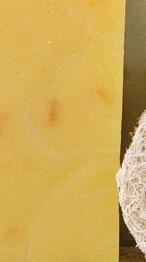

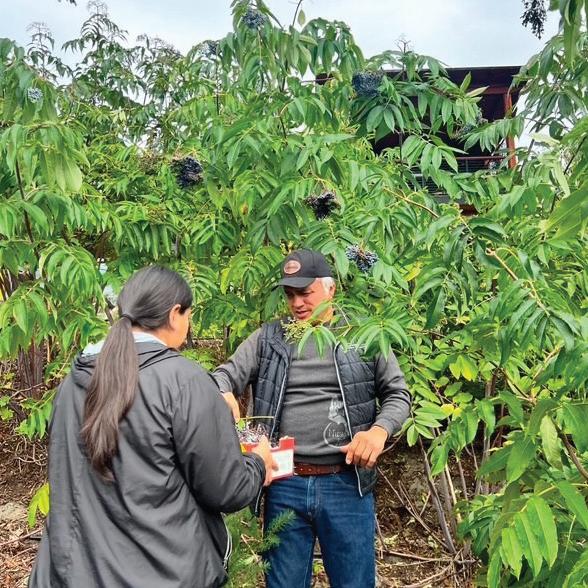
Accompanying the 13 Moons curriculum is other program work, including increasing access to fresh, local produce. 13 Moons at Work operates the 13 Moons community garden and the Swinomish preschool’s mini 13 Moons garden. Fruits and vegetables from the garden are freely shared in the community via produce carts, at Elder lunches, and in the main kitchen
Then, to build out this cooperative circle of giving even further, the Co-op applied for Organically Grown Company’s Mission Grant in an effort to join forces with our Portland-based produce supplier as part of a multi-pronged effort with national, regional, local implications, and ripple effects at every level. The ask? Additional funds for 13 Moons.
Typically, OGC’s Mission Grant is awarded to help support produce departments like ours with equipment and other immediate produce-related needs. A monetary donation for the Co-op to pay forward did not fall within the grant’s scope. We applied anyway.
Organically Grown Co. generously awarded us $2,500 additional dollars to give to 13 Moons!
Lastly, the November Field Day promotion was a contest for member food co-ops: co-ops with the best execution would be awarded prize money. We believed receiving the OGC grant would improve our chance of winning the contest, so in our OGC Mission Grant application, we also pledged to donate the NCG prize money amount to 13 Moons at Work, should we win. And guess what?! We got 2nd place, adding another $2500 to the donation total.
Together, we are all helping 13 Moons continue its work to promote Native food sovereignty, with its implied consideration for climate, natural resources, local farming, Native foodways, and food access right here in Skagit Valley.
And that, is the beauty of cooperation: good keeps growing, and the ripples continue…